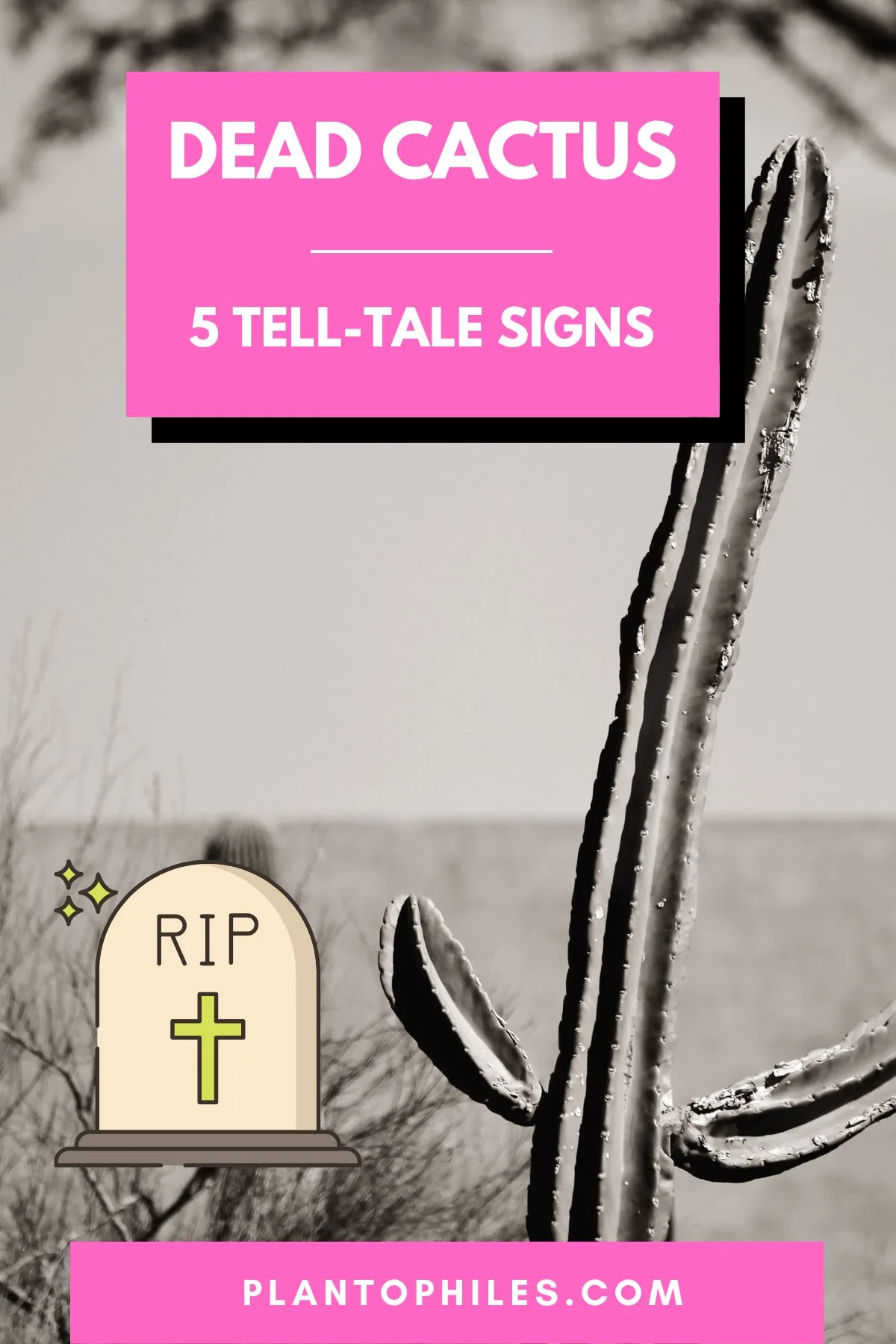Cacti are often recommended as a good beginners’ houseplant because they are said to be very hard to kill. However, while cacti are an easy-to-care-for plant, they do still frequently die.
Here is a short guide to help you figure out whether you can save your prickly friend by identifying why your cactus is dying and taking steps to reverse the problem or whether you must accept that they’re gone for good.
Table of Contents
How to tell if a cactus is dead
To tell if your cactus is dead, check for a shriveled appearance, instability in soil, discoloration, loss of spikes, and a mushy, bad-smelling texture. These signs usually indicate that the cactus is beyond saving and should be replaced.
1. Shriveled and husk-like cacti
Cacti do not grow fast and can take several years to change in size noticeably. So, while slow growth is not necessarily something to be concerned about, there are other physical changes you will want to pay close attention to.
Cacti come in a highly diverse range of colors and textures. A blue torch cactus looks very different and requires highly different care than a bunny ear cactus. This means that there is no one-size-fits-all rule about what a healthy cactus should look like.
That said, if your cactus looks dramatically different from the images depicting your cactus variety on reputable horticultural websites or in plant care books, then you probably need to take action to revive your dying cactus.
The skin of most cacti should appear plumped and firm. If your cactus begins to wither and looks increasingly like a husk, it is either dying or already dead.
Cacti shrink when they don’t receive enough water, giving them their shriveled look. A shriveled cactus is really just trying to save itself by reducing its size so that it does not need as much water to survive.
If a cactus begins to shrink and wither and continues to go without water, it will die. If your cactus looks like a husk and you suspect it is dead, try watering it thoroughly.
If it absorbs the water and begins to perk up again over the course of the next two weeks, you’re in the clear. If your cactus remains brown and withered even though you have watered it, then your cactus is dead.
2. Cacti that are shaky in their soil
If a cactus falls over or becomes unstable and shaky in its soil, it is probably dead. Cacti become shaky and fall over when their roots can no longer support them.
This usually occurs due to root rot caused by overwatering or underwatering over a long period.
If your cactus has fallen over or is close to doing so, your cactus is dead.

3. Cacti that become discolored
If your cactus has yellow, discolored patches that are turning brown, this usually means your cactus is close to death or dead.
Cactuses turn brown for several reasons, including underwatering. Underwatered cacti become husk-like and dry, while overwatered cacti become soft and mushy.
Cacti change color for several reasons, not all of which are bad.
However, if you notice the color of your cactus changing, pay careful attention to how it continues to change over the next few weeks and ensure you are providing it with the proper care.
While some browning can indicate that a cactus is dying or dead, some browning is normal. Older cactuses will “cork,” which means they will develop a light brown, aged-looking skin over their green layer.
Corking usually begins from the bottom of the cactus and works its way up. Do not worry if you see signs of corking. It is a natural process of aging.
Some cacti will turn a reddish color when they are stressed. They will recover their natural color when the environmental conditions causing them stress are reversed.
Look up the care guide for your cactus variety and follow the precise care instructions.
4. Cacti losing their spikes
Cacti will begin losing their spikes if they are unwell. This usually occurs as the result of root rot.
You may also notice brown or black discoloration around the spikes before they fall off.
While different cacti may lose spikes for different reasons, if a cactus that normally has healthy, strong spikes loses them all, it has likely died.
5. Soft, bad-smelling, and mushy cacti
The main cause of death of cacti is cactus stem rot.
Your cactus has rot if any part of it becomes mushy, soft and begins to smell bad. Rot can begin anywhere on the plant and spread to the rest of the cactus.
If you can smell the rot in your cactus, your cactus is dying and can likely not be saved. If you touch your cactus and some part of it falls off easily or cracks, this is also a sign that your cactus is dead.
If you see small wet patches, you can save your cactus by cutting off any affected areas and placing it in a very sunny spot to dry out.
That said, root and stem rot is pervasive and is often almost impossible to reverse.
Pests and fungi can also cause cacti to die by exacerbating rotting roots or stems.
Cochineal insects like mealybugs and scales are highly attracted to cacti. If you notice white spots on your cactus, this may indicate an infestation.
While most pests will not usually be fatal for a cactus, when combined with rot they can lessen a cactus’s ability to revive itself and may cause it to die.

Daniel has been a plant enthusiast for over 20 years. He owns hundreds of houseplants and prepares for the chili growing seasons yearly with great anticipation. His favorite plants are plant species in the Araceae family, such as Monstera, Philodendron, and Anthurium. He also loves gardening and is growing hot peppers, tomatoes, and many more vegetables.


